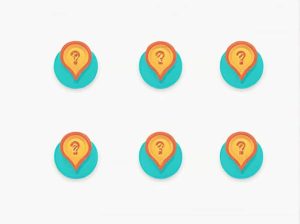Adjectives are words that describe or modify nouns, providing more detail or information about them. In English grammar, adjectives can be used in two primary ways: attributively and predicatively. Understanding the difference between these two uses is crucial for forming accurate and effective sentences. we will explore the concepts of attributive and predicative adjectives, provide examples, and offer exercises with answers to help you master their usage.
What Are Attributive Adjectives?
Attributive adjectives are adjectives that come before the noun they modify. They directly describe the noun in the sentence. This type of adjective is often used in a more straightforward, descriptive sense.
Examples of Attributive Adjectives:
- A beautiful painting
- An old book
- A tall building
In these examples, ‘beautiful,’ ‘old,’ and ‘tall’ are all attributive adjectives because they modify the noun directly and come before it in the sentence.
What Are Predicative Adjectives?
On the other hand, predicative adjectives are adjectives that are linked to the noun through a verb, typically a linking verb such as ‘is,’ ‘are,’ ‘was,’ or ‘were.’ These adjectives come after the noun or pronoun they modify.
Examples of Predicative Adjectives:
- The painting is beautiful.
- The book is old.
- The building is tall.
In these cases, the adjectives ‘beautiful,’ ‘old,’ and ‘tall’ are used predicatively. They are not placed directly before the noun: instead, they follow the linking verb and describe the subject in the predicate part of the sentence.
Key Differences Between Attributive and Predicative Adjectives
To summarize the key differences:
- Attributive adjectives come before the noun they modify.
- Predicative adjectives come after the noun and are linked by a verb.
Understanding these distinctions can help you structure your sentences more clearly and accurately.
Exercises: Identifying Attributive and Predicative Adjectives
Now that we have defined and discussed the use of attributive and predicative adjectives, lets move on to some exercises. These will help you practice identifying and using adjectives in both forms. The answers are provided at the end of the exercise section.
Exercise 1: Identify the Adjective Type
In each of the following sentences, identify whether the adjective is attributive or predicative.
- The movie was interesting.
- I bought a new car yesterday.
- The weather is cold today.
- She wore a red dress to the party.
- The cake looks delicious.
- He lives in a large house.
- Her explanation was confusing.
- This is a great opportunity.
- My brother is tall.
- It was a hard decision to make.
Exercise 2: Fill in the Blanks with the Correct Adjective
Choose the correct adjective to complete each sentence. The adjective should either be used attributively or predicatively, depending on the context.
- The dog looks __________ (playful / playful dog).
- This is a __________ (small / small room).
- She seems __________ (happy / happy woman).
- They have a __________ (beautiful / beautiful view).
- He is __________ (energetic / energetic person).
- It was an __________ (unexpected / unexpected situation).
- The children were __________ (excited / excited children).
- He gave an __________ (excellent / excellent presentation).
- The garden smells __________ (fragrant / fragrant flowers).
- This is a __________ (difficult / difficult problem).
Answers
Lets go over the answers to the exercises to reinforce your understanding of attributive and predicative adjectives.
Answers for Exercise 1: Identify the Adjective Type
- The movie was interesting. Predicative
- I bought a new car yesterday. Attributive
- The weather is cold today. Predicative
- She wore a red dress to the party. Attributive
- The cake looks delicious. Predicative
- He lives in a large house. Attributive
- Her explanation was confusing. Predicative
- This is a great opportunity. Attributive
- My brother is tall. Predicative
- It was a hard decision to make. Attributive
Answers for Exercise 2: Fill in the Blanks with the Correct Adjective
- The dog looks playful. Predicative
- This is a small room. Attributive
- She seems happy. Predicative
- They have a beautiful view. Attributive
- He is energetic. Predicative
- It was an unexpected situation. Attributive
- The children were excited. Predicative
- He gave an excellent presentation. Attributive
- The garden smells fragrant. Predicative
- This is a difficult problem. Attributive
Why is It Important to Know the Difference?
Understanding when and how to use attributive and predicative adjectives is crucial for several reasons:
- Clarity in Communication: Knowing where to place adjectives in a sentence helps ensure your message is clear and grammatically correct.
- Improving Sentence Structure: Proper adjective placement can enhance sentence variety, making your writing more engaging and dynamic.
- Confidence in Writing: When you master the use of adjectives, you gain more control over your writing and can better express ideas, emotions, and descriptions.
Attributive and predicative adjectives both play essential roles in English grammar, but they function in different ways. Attributive adjectives directly modify nouns and come before them, while predicative adjectives modify nouns through a linking verb and appear after the noun. By understanding these differences, you can improve your writing and communication skills. Practicing with exercises, such as the ones provided, will help you become more comfortable using adjectives correctly. Keep experimenting with sentences to get a deeper understanding of how adjectives shape meaning in English.



